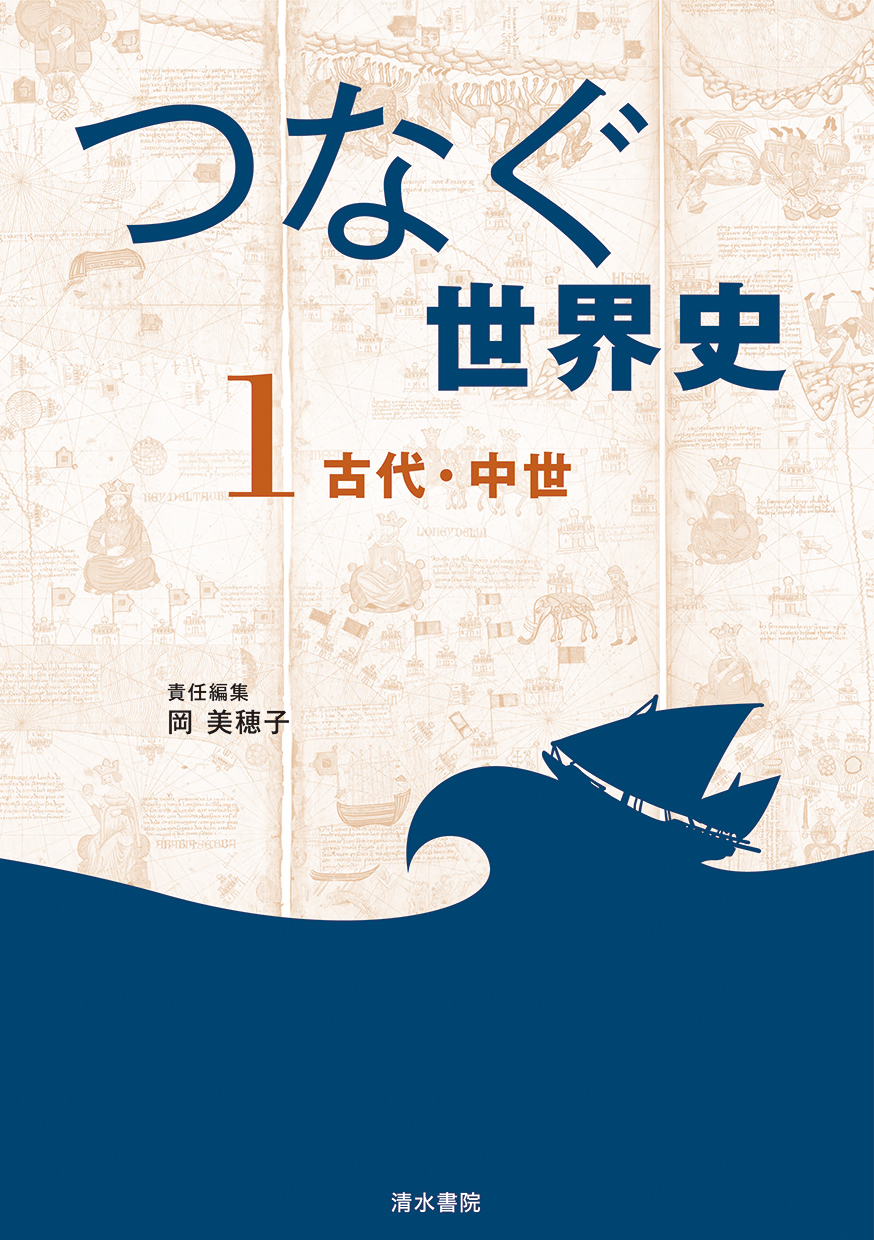
Title
Tsunagu Sekaishi 1 (Connected World History 1 - Ancient and Medieval Times)
Size
248 pages, A5 format
Language
Japanese
Released
March 31, 2023
ISBN
978-4-389-22601-5
Published by
Shimizu Shoin
Book Info
See Book Availability at Library
Japanese Page
Since my childhood, I have harbored a deep passion for history. Although we never had an extensive collection of books in my family home, we did possess the complete volumes of the Heibonsha World Encyclopedia and, somewhat peculiarly, a complete series on Greco-Roman history. I suspect my mother heeded the persuasive words of a salesman and took out a loan to purchase these books. This was indeed the quintessential Showa-era family ethos.
Initiating my studies with the slim workbooks provided by women known as Gakken Obachan, my parents later purchased Gakken’s complete set of children’s Japanese history books for me. My parents bought me only two history manga books. I read them over and over again, year after year, and this repeated perusal ingrained in me an in-depth knowledge of the Meiji Restoration. As we had only a few books, repeated readings forged a deep familiarity with their contents, and consequently I never faced much trouble with memorizing historical facts in junior high and high school. Upon assuming the role of a parent, assisting my child with entrance exam preparation, I found myself astounded when I saw them wondering how they would be able to memorize such vast amount of information. History in school is indeed purely a matter of rote memorization. Despite the efforts of teachers to promote active learning, the reality remains that university entrance exams predominantly test memorized knowledge. While the essence of learning history lies in understanding the causal relationships between historical events, a foundational knowledge base is imperative. Students have to memorize and contemplate this knowledge within a constrained timeframe, making the task of high school teachers far from easy. Many university instructors are unaware of the challenges faced by high school teachers, often formulating entrance exam questions with the assumption that students possess a level of understanding akin to their expectations. Meanwhile, the problems confronting high schools continue to mount.
Authored by high school teachers, researchers from local governments, university instructors, and other history enthusiasts, this book seeks to illuminate how our everyday living environments are interrelated to world history. Despite being an island nation, Japan’s historical narrative unfolds as it shapes a national culture and civilization by adopting various influences from the outside world. The book is designed to provide historical snapshots of Japan, East Asia, and the wider world beyond Eurasia at specific points in time. While acknowledging that no single volume could encapsulate the entirety of world history, this book represents a novel attempt to illustrate how Japanese history intersects with world history along both axes. Readers will gain an understanding of how seemingly insignificant events at the western tip of Eurasia can send ripples across West and Central Asia, resonating even in the Far East. These ripples can traverse from east to west, north to south, or south to north. Mindful about the trend toward “integrated history,” a new high school history subject mainly concerned with how Japanese history and world history intersect from the 17th century onward, the authors aimed to offer readers an idea about how these intersections extended much further back in history. We hope readers will appreciate that their local environment is just a fragment of a much wider world, and that the door to this wider world will open to them only if they knock on it.
(Written by OKA Mihoko, Associate Professor, Historiographical Institute / 2023)



 Find a book
Find a book









